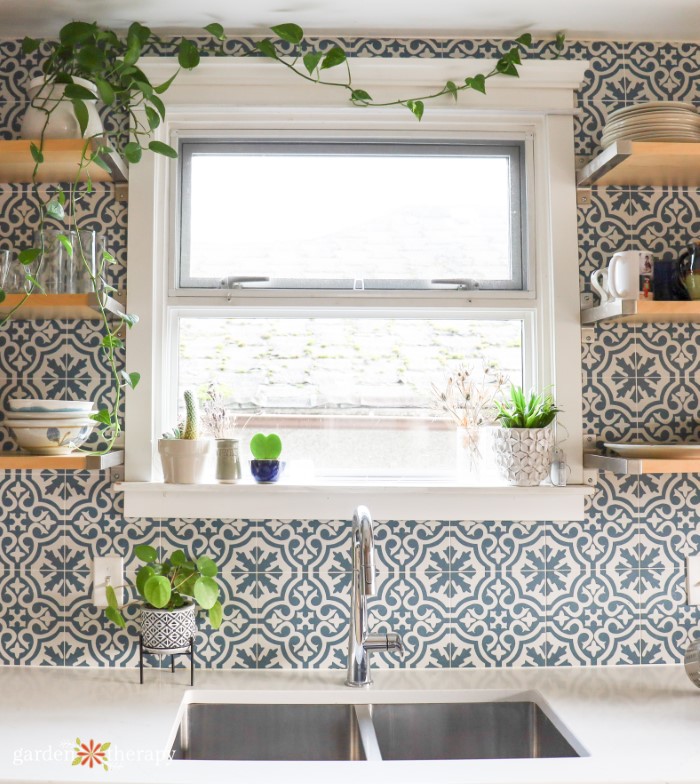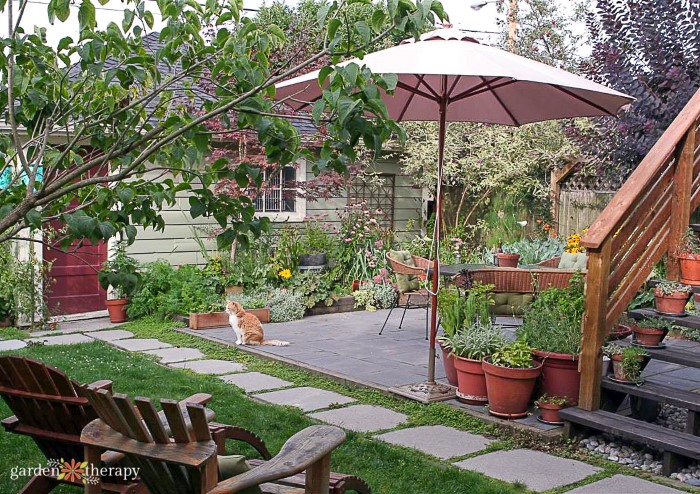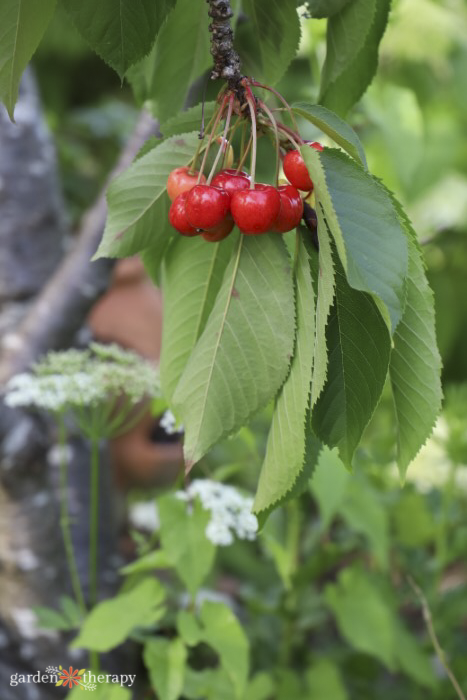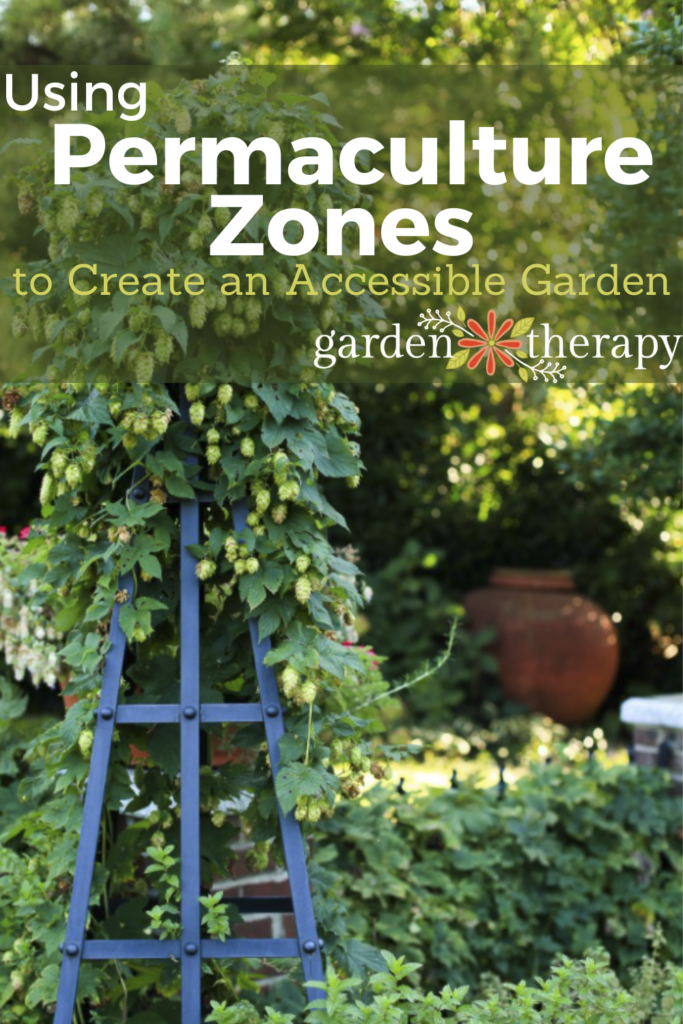When designing your garden or finding that a current setup isn’t working for you, consider permaculture zones. Zoning is a staple practice that allows you to create efficient and compatible gardens depending on your space.

When you’re first planning a garden, one of the first things you will want to look at is zones. Permaculture zones are a way of organizing the plants in your yard depending on accessibility and energy.
A zone will ensure you don’t plant a shrub too far away from a water source for you to easily access, that your herbs are readily snippable while cooking, and that your morning walk to collect the chicken eggs doesn’t involve a hike to the other side of your property.
Zoning is a staple in permaculture practice and is fundamental to the design process. If you’re new to the idea of permaculture zones, I’ll break it down for you today!
This post will cover…
- What Are Permaculture Zones?
- Permaculture Zones and Accessibility
- Permaculture Zones
- Bonus Zone: Self and Body
- Zone 0: Home
- Zone 1: Garden
- Zone 2: Food Forest
- Zone 3: Farm
- Zone 4: Woodland
- Zone 5: Wild Forest
- Frequently Asked Questions About Permaculture Zones
- More Posts to Read

What Are Permaculture Zones?
Permaculture zones are groupings of plants based on how often you use and tend to them. This can include all garden elements, from trellises and greenhouses to bird feeders and rain barrels.
Zones are meant to help you in the designing and planning part of your garden to help conserve energy and maintenance. With zones, you’re left with effective, efficient, and ethical gardens.
When planning, you can place plants and structures according to the frequency of use, scale, and required care. Then, you ask yourself what the plant needs to survive, like nutrients, structures, access, and more, so you can plan accordingly.
Zones aren’t meant to be rigid and circular. They’re flexible, invisible lines with no boundaries whatsoever. They’re meant to blend together and can be any shape or size. No one’s permaculture zones will look alike.

Permaculture Zones and Accessibility
Permaculture zones are a huge part of accessible gardening as you learn how to position what you need most close to you and the home.
As someone with a disability, accessibility is very important to me, and permaculture zones really stood out. In my last garden I just moved from, I tried to place those plants I used daily right just steps from my home.
My house was on a slight hill, so when I was sore or had issues with my mobility, there was no way I would walk to the bottom and climb back up.
But I knew that I had the plants I relied on the most in my reach, from herbs for my kitchen, my espalier for picking apples, a hummingbird feeder I could easily fill, and a space to sit and soak in garden therapy.
When I had my relapse last year, I was thankful I had gone through the effort to plan my garden this way. So even if accessibility has never been a concern for you, I encourage you to consider it when planning your garden for the possible future and others who may visit.

Permaculture Zones
No matter what your garden space is, you can create zones based on using all your different spaces. And I really mean every garden!
This can range from an apartment with no patio to a complete homestead. If you’re growing plants and interested in permaculture, then you can apply these zones—albeit some may need to be creative.
For instance, a city house like mine won’t have the space for all these zones. I can put my large fruit trees and perennials in the back, but I won’t have my own managed woodland or farm.
Instead, I look to public spaces. And I do my best to help them out and employ these practices even as a visitor!
In fact, there’s so much to say about how to make permaculture zoning work for you and your space that I wanted to write another article. After reading this, check out this post on how to use permaculture zones in any gardening space.

Bonus Zone: Self and Body
I want to start things off by going off book. Many places site only 6 zones (0-5), but some may also include the self and body as its own zone.
As someone who focuses on the garden and its ability to heal oneself, it only felt appropriate to start with this bonus permaculture zone.
Your body affects your ability to interact with the outer zones. It’s in use all the time, with physical, mental, and emotional factors always affecting your abilities. Our goal is to keep our bodies strong and our minds clear and centred.
- Goal: maintain overall health and self-awareness.

Zone 0: Home
Your home is your immediate zone. The function is to support the self and the body. You use it every day and every night, covering every inch of your living space.
While you may not think of gardening inside the home, it includes the indoor plants and the practices you’re doing in your home to better the environment and local ecosystem.
This can mean everything from shorter showers to growing sprouts in the winter to produce food.
- Goals: conserve energy, produce small amounts of food, make and store food, reduce waste, and utilize local materials.
- Plants: indoor houseplants, herbs, compost pre-station, worm farm, and more.
- Animals: pets.

Zone 1: Garden
Right outside your home is the beginning of your true garden. This is the most intensively cultivated and cared-for space. It should be easily accessible since you’re likely to use it daily.
The garden is the area immediately surrounding your home, including your front yard, backyard, and any porch or deck space.
You might begin to see structures in your garden like a patio, compost bin, bird feeder, vegetable garden, small pond, windbreak, a cold frame, small greenhouse, and more.
In the garden, you would employ methods such as intensive planting, companion planting, sheet mulching, and other permaculture gardening practices. You may also have water systems such as a rain barrel or drip irrigation.
- Goals: reduce water needs, limit maintenance, use natural resources, support wildlife, and create a harmonious space.
- Plants: herbs, salad greens, flowers, annual vegetables, small shrubs, and dwarf trees.
- Animals: insects, soil organisms, birds, and small animals.

Zone 2: Food Forest
The food forest is one of my favourite places in the garden. This area is semi-cultivated and is mostly self-sustaining, besides pruning and harvesting. It consists of the area just beyond the garden, and you’re likely to visit it on most days.
Inside your food forest, you might have larger structures like a greenhouse, a large compost bin, a barn, beehives, and a small orchard.
Common practices for your food forest include cover crops, heavy mulching, polyculture guilds, green manure, and seasonal pruning.
- Goals: food production, plant propagation, wildlife habitat, sharing excess with community and neighbours.
- Plants: fruit and nut trees, perennial vegetables and herbs, and other staple and canning food.
- Animals: wildlife, chickens, and other small farm animals.

Zone 3: Farm
Farmland is nearly exactly as you picture it. This is the space beyond your immediate property and living area and includes the broad-scale land base surrounding it. To reach it, you might have to go on a long walk or hop on a bike!
In the main season, you might visit this land every couple of days and pretty much never in the off-season.
This farmland could include a much larger orchard, grazing fields for farm animals, a field shelter, perennial crops, and animal feed storage.
- Goals: high yields for food, hydrate the land, earn income, and storage space.
- Plants: cash crops, large fruit and nut tree, animal forage and feed, and hedgerows.
- Animals: farm animals like cows, horses, pigs, and sheep.

Zone 4: Woodland
The woodland zone requires very little care and remains mostly natural. Think of a trail through the forest that might need annual maintenance!
Woodland consists of the area just beyond the farm zone, often not accessible by walking. Depending on your local landscape, it may look like open fields, pastures, or cultivated woodland.
In this area, you traditionally use it for hunting, gathering, selective forestry, and wildcrafting. As far as human input goes, you may perform controlled burns, selective forestry, and long-term planting. Otherwise, it’s on its own.
- Goals: utilize the land while putting in little maintenance, animal supply, and leave behind nutrients for the ecosystem.
- Plants: native plants and trees, mushrooms, foraging materials, and timber.
- Animals: wild animals and grazing animals.

Zone 5: Wild Forest
The last permaculture zone is a wild forest, completely free from human maintenance or interference. You might visit this space weekly or monthly, depending on how much of an outdoor enthusiast you are. These are your hiking trails, campsites, and areas far away from any skyscrapers and towns.
- Goals: try to preserve nature without interfering, restore native habitat, maintain wildlife populations, stabilize soil and water, prevent soil erosion, and support rivers.
- Plants: native plants and indigenous forests.
- Animals: wild animals.

Frequently Asked Questions About Permaculture Zones
Here’s a quick reference, including the bonus zone!
Zone 0: Home
Zone 1: Garden
Zone 2: Food Forest
Zone 3: Farm
Zone 4: Woodland
Zone 5: Wild Forest
Bonus: Self and body
Layers are separate from zones and consist of vertical space in permaculture designs. They’re a popular practice in food forests. The seven layers include:
1. Canopy
2. Large shrub
3. Shrub
4. Herbaceous
5. Ground cover
6. Underground
7. Climbers





Stephanie,
You have a perfectly beautiful profile! Most people do not have such pretty profiles, and they hesitate to display a “side view,” but you have a lovely one. I enjoy your posts, and the photos are always so colorful and cheerful. We need more people like you in our world! Thanks for a great blog and congrats on your success with your books.